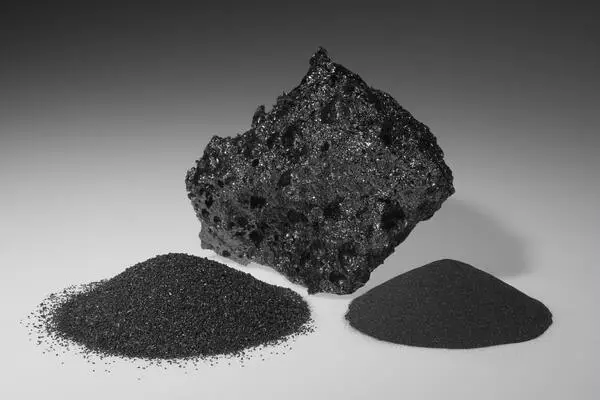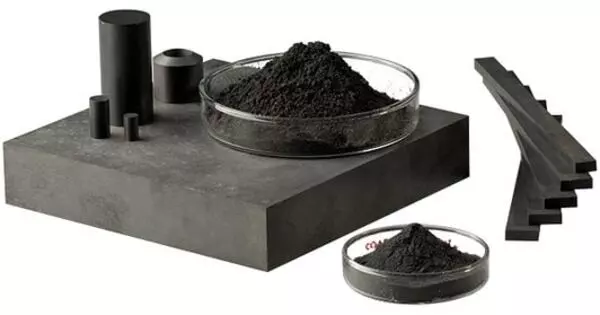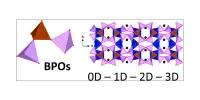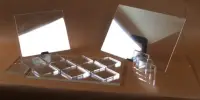Boron carbide is a boron-carbon ceramic and covalent material that is used in tank armor, bulletproof vests, engine sabotage powders, and a variety of industrial applications. It is one of the hardest known materials, with a Vickers hardness of >30 GPa, trailing only cubic boron nitride and diamond.
Boron carbide was discovered in the nineteenth century as a byproduct of metal boride reactions, but its chemical formula was unknown. It wasn’t until the 1930s that the chemical formula was determined to be B4C. Controversy remained as to whether or not the material had this exact 4:1 stoichiometry, as, in practice the material is always slightly carbon-deficient with regard to this formula, and X-ray crystallography shows that its structure is highly complex, with a mixture of C-B-C chains and B12 icosahedra.
Properties
Boron carbide is a tough material with extremely high hardness (about 9.5 to 9.75 on the Mohs hardness scale), a high cross section for neutron absorption (i.e. good neutron shielding properties), and resistance to ionizing radiation and most chemicals. Its Vickers hardness (38 GPa), Elastic Modulus (460 GPa), and fracture toughness (3.5 MPa•m1/2) are comparable to diamond (1150 GPa and 5.3 MPa•m1/2, respectively).
- Chemical formula: B4C
- Molar mass: 55.255 g/mol
- Appearance: dark gray or black powder, odorless
- Density: 2.52 g/cm3, solid.
- Melting point: 2,763 °C (5,005 °F; 3,036 K)
- Boiling point: 3,500 °C (6,330 °F; 3,770 K)
- Solubility in water: insoluble
- Crystal structure: Rhombohedral
- Semiconductor properties

Boron carbide is a semiconductor with hopping-type transport as its primary electronic property. The energy band gap is affected by both composition and degree of order. The estimated band gap is 2.09 eV, with multiple mid-bandgap states complicating the photoluminescence spectrum. Typically, the material is p-type.
Preparation
Boron carbide was first synthesized in 1899 by Henri Moissan in an electric arc furnace by reducing boron trioxide with carbon or magnesium in the presence of carbon. In the case of carbon, the reaction takes place at temperatures above the melting point of B4C and results in the release of a large amount of carbon monoxide:
2 B2O3 + 7 C → B4C + 6 CO
If magnesium is used, the reaction can be carried out in a graphite crucible, and the magnesium byproducts are removed by treatment with acid.
Reaction
Temperatures as low as 250°C in the presence of water vapour and 450°C in the absence of water vapour have been observed for boron carbide powder oxidation. Water vapour removes the B2O3 oxidation substance at a rate faster than the oxidation rate at temperatures between 5500 and 6000 degrees Celsius. B2O3 on the B4C surface inhibited H2O oxidation but not air oxidation. The rate was discovered to be linearly related to the partial pressure of water.
Applications
Boron carbide is commonly used in nuclear applications as a neutron radiation absorbent due to its high melting point and thermal stability; it is used as abrasive powders and coatings due to its extreme abrasion resistance; it excels in ballistic performance due to its high hardness and low density; and it is used in refractory applications due to its high melting point and thermal stability.
Boron Carbide is used in the anti-ballistic plating of human and vehicle body armor. These armor plates can withstand the impact of bullets, shrapnel, and missiles.













